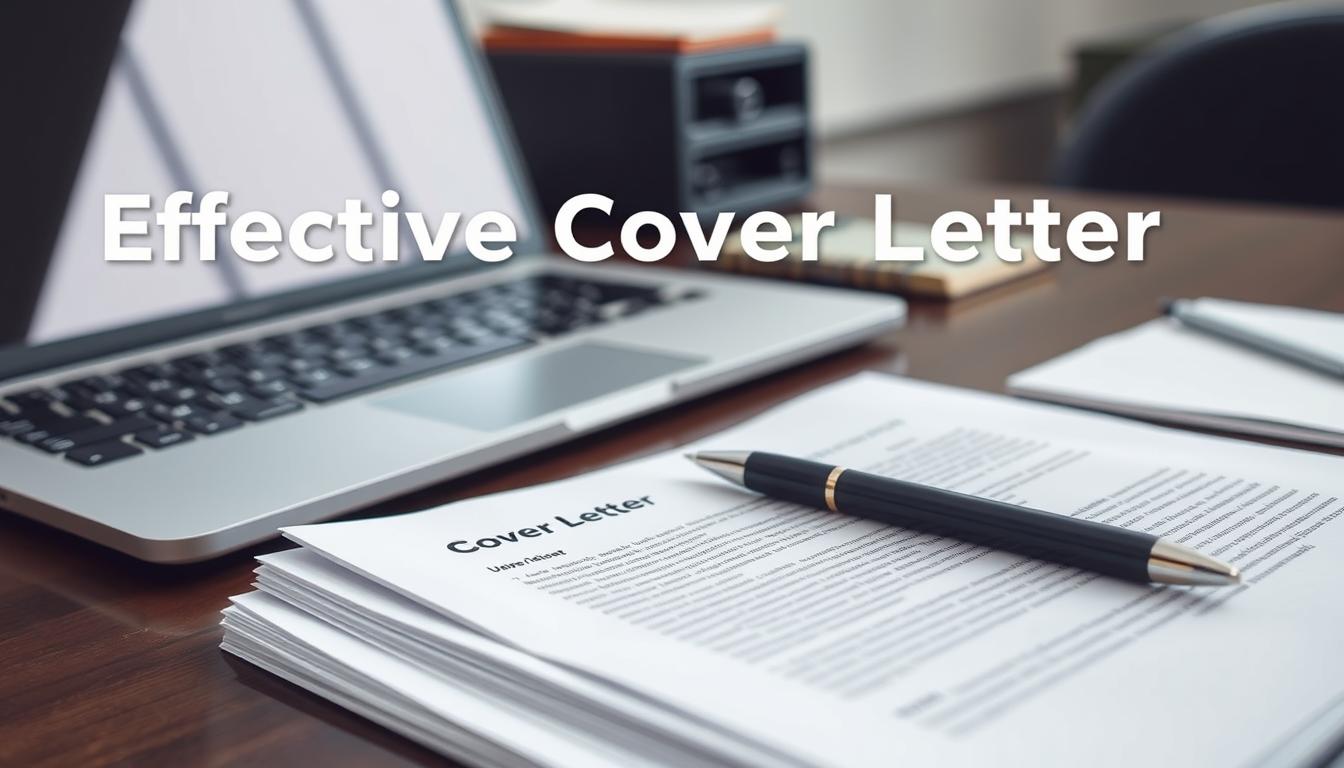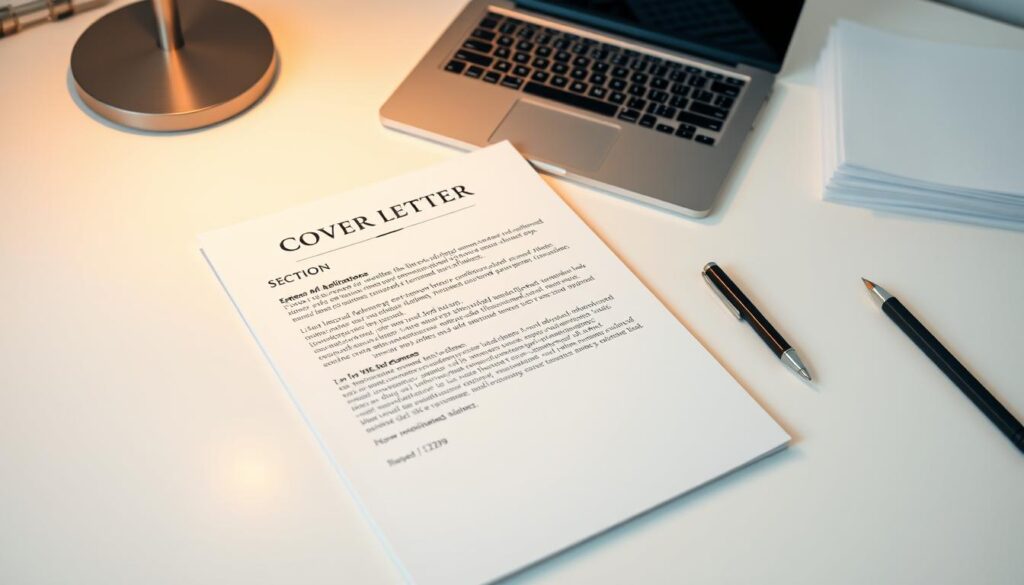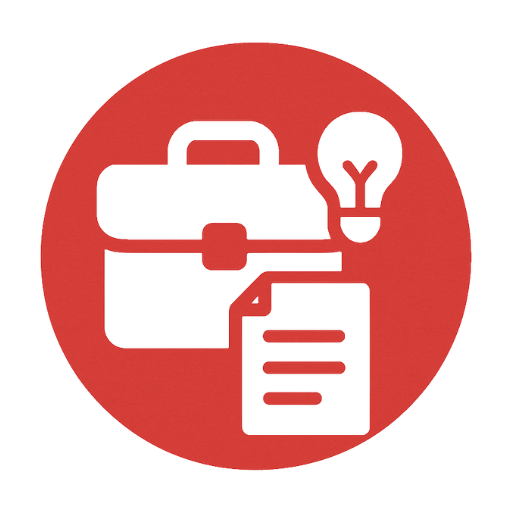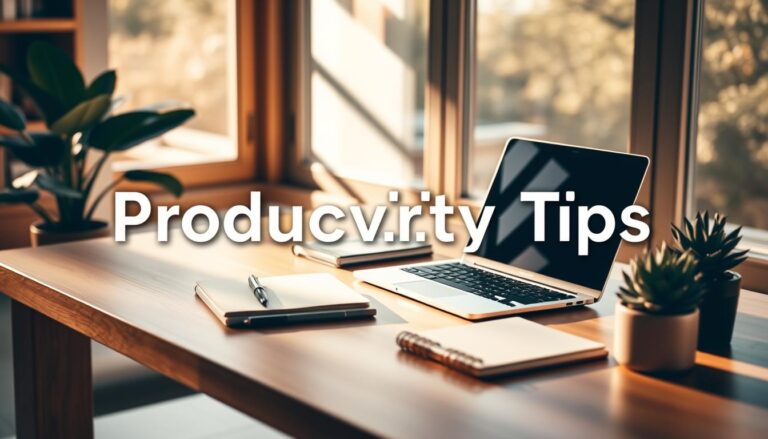Tips for Crafting a Cover Letter That Stands Out

When you apply for a job, a well-written cover letter is key. It shows your skills to potential employers. The Ontario Shared Services guide says a cover letter is great for showing how you fit the job.
An effective cover letter can really help you stand out. This article will share important cover letter tips. You’ll learn how to write one that showcases your strengths and boosts your chances of getting an interview.
Understanding the Purpose of a Cover Letter
A cover letter is meant to add more detail to your résumé. It tells a story of what makes you special for the job. The Ontario Shared Services guide explains it well.
It’s a key document that goes with your résumé. It lets you highlight your skills and experiences that fit the job. This shows you’re excited about the role and ready to help the company.
The importance of a cover letter lies in its ability to provide context to your application. It makes your achievements and qualifications stand out. A good cover letter can make you more noticeable and boost your chances of getting an interview.
In short, a cover letter introduces you to the employer. It shows you’re interested in the job and explains why you’re a good fit.
Research Before You Write
It’s important to know the job, the company, and the industry before you start writing your cover letter. Rotman Commerce Career Services says this research helps you understand what the company needs and its culture. This way, you can make your cover letter fit perfectly.
Research Tips: First, read the job posting carefully to find out what skills and tasks are needed. Then, check the company’s website, mission statement, and recent news. This will help you understand its values and projects.
Learning about the industry can show you the challenges the company faces. This lets you highlight how your skills and experiences can help solve these problems. With good research, your cover letter will grab the reader’s attention and show you’re really interested in the job.
Essential Elements of an Effective Cover Letter
Making a cover letter stand out means including key elements. A well-structured cover letter is key to impressing employers.
The header of your cover letter should list your contact info, the date, and the employer’s details. This part is crucial for getting your letter to the right person.
When addressing the letter, try to use the hiring manager’s name if you can. If not, “Dear Hiring Manager” is a good fallback.
The subject line or reference line should clearly state the job you’re applying for. This ensures your application goes to the right place.
The opening paragraph should catch the reader’s eye. Highlight your biggest achievements and show you’re interested in the job.
The mid-section is where you dive into your skills and experiences. Show how they match the job’s needs.
The closing paragraph should thank the reader and express your eagerness for an interview. This leaves a good impression and shows you’re excited about the role.
By adding these key elements, you can make an effective cover letter that boosts your job application.
Crafting an Attention-Grabbing Opening
Creating an attention-grabbing opening for your cover letter is key. Rotman Commerce Career Services says the first paragraph should share a few important things. It should show why you’re a good fit, why you’re excited about the role, and a bit about your personality.
To grab attention, start by addressing the hiring manager by name if you can. This personal touch makes your application seem more tailored. Then, clearly state the job you’re applying for and how you found it. This shows you’ve done your homework on the company.

Starting with your most relevant skill or achievement grabs the reader’s interest. For example, if you’re applying for a marketing job, talk about a successful campaign you led. Also, showing your excitement for the company or role makes your application more engaging.
Your opening paragraph should be short but packed with information. Aim to spark enough curiosity to keep the reader reading. This way, you’ll make a strong impression on the employer.
Writing a Powerful Body Section
A strong body section in a cover letter is key. It shows your skills, experiences, and achievements. This makes a solid case for why you’re the best fit for the job.
To make a compelling body section, balance showing your accomplishments and understanding the role. Start by listing your relevant skills and experiences. Then, give specific examples that show your abilities.
Quantifying Your Impact with Numbers
Showing your impact with numbers is a great way to stand out. Using figures and statistics paints a clear picture of your success. For example, saying “increased sales by 25%” shows you’ve made a real difference.
The Ontario Shared Services guide suggests using specific examples to show your skills. Mentioning you “managed a team of 10 people,” “reduced project delivery time by 30%,” or “increased customer satisfaction ratings by 20%” makes your achievements real and believable.
When you quantify your impact, use metrics that matter for the job. This shows you have the right skills and experiences. Also, ensure the numbers you use are correct and can be checked.
By adding specific numbers and metrics to your body section, you create a more engaging story. This approach not only grabs the reader’s attention but also clearly shows your value as a candidate.
Creating a Strong Closing Paragraph
A well-crafted closing paragraph is key to making a lasting impression. It’s your last chance to show you’re interested in the job and thank the employer for their time.
Rotman Commerce Career Services says to thank the employer and show your excitement for the role. Use a sincere tone and highlight your qualifications.
A strong closing paragraph should be polite and confident. You could say, “Thank you for considering my application. I am confident that my skills and experience make me an ideal candidate for this role.”
By writing a strong closing paragraph, you can make a good impression. This can help you get an interview.
Tips for Crafting a Cover Letter That Stands Out
To make your cover letter memorable, balance showing your skills with adding your personality. This balance is key to grab the hiring manager’s attention and leave a lasting impression.
Balancing Professionalism with Personality
Your cover letter should show your professional achievements and a glimpse of your unique personality. Avoid being too formal or too casual. Aim for a tone that is professional yet shows your character.
Use language from the job posting in your narrative. This shows you understand the company’s needs and have the right skills.
Sharing relevant anecdotes or experiences can also make your cover letter engaging. These stories should highlight your skills and how you can contribute to the organization.
Showing enthusiasm and passion for the role and company is crucial. This can be done through your language and tone, making your cover letter more compelling.
By balancing professionalism with personality, you can create a cover letter that stands out and leaves a positive impression on the hiring manager.
Formatting and Design Considerations
When it comes to cover letters, the format and design are key. A well-structured cover letter can greatly impact how employers see your application.
Choosing the Right Font and Spacing is crucial. Rotman Commerce Career Services suggests using a standard font for easy reading. Also, proper spacing between paragraphs makes your letter more readable.

Effective design considerations include a clean and professional layout. Avoid clutter and keep your cover letter concise, usually not over one page. This shows respect for the reader’s time and highlights your communication skills.
Common Cover Letter Mistakes to Avoid
A well-written cover letter is key, but avoiding common mistakes is just as important. Including common cover letter mistakes can quickly lead to rejection.
The Ontario Shared Services guide warns against adding irrelevant or personal info. This is especially true for oversharing personal information.
Oversharing Personal Information
Sharing too much personal stuff can make your letter seem unprofessional. It’s vital to keep things professional and focus on your skills and how they match the job.
To sidestep this, focus on your professional wins and what you can offer the employer. This approach not only steers clear of common cover letter mistakes but also makes your letter compelling. It shows you’re a strong fit for the job.
By watching out for these common errors, you can make a cover letter that impresses. This boosts your chances of getting an interview.
Tailoring Your Cover Letter for Different Situations
Customizing your cover letter for various situations can really help your job search. Rotman Commerce Career Services says to tailor each cover letter to the job you’re applying for. This means highlighting the skills and experiences that match the job best.
It’s key to adjust your cover letter for each job you apply to. You need to carefully read the job description. Then, include the important phrases and qualifications in your letter.
For example, if you’re applying for a manager role, talk about your leadership and team management experience. For a technical job, focus on your technical skills and projects you’ve done.
Also, research the company culture and make your letter fit their values and work environment. This shows you’re interested in the company and ready to adapt.
By making your cover letter specific to each job, you can stand out in a crowded job market. You’ll also make a good impression on potential employers.
Digital Considerations for Modern Applications
Job applications are now mostly online. It’s key to update your cover letter approach. Digital considerations are vital in today’s job hunt, shaping how your cover letter is seen and evaluated.
When applying online, make sure your cover letter is ATS-friendly. Use clear headings and short sentences to grab attention.
For emails, a clear subject line is essential. Attach your cover letter as a PDF to keep the layout intact. Customize your application for each job and company, highlighting your grasp of their digital world.
Conclusion
Writing a good cover letter is key to impressing employers. We’ve talked about why it matters, how to research companies, and how to tailor your application. These steps help make your cover letter stand out.
The Ontario Shared Services guide and Rotman Commerce Career Services stress the need to proofread your cover letter. This ensures it’s free of mistakes. By following the tips in this article, you can make your job applications stronger. This boosts your chances of getting noticed in a tough job market.
In short, a cover letter is a crucial part of applying for a job. With the right approach, you can tell a story that shows off your abilities and experience. Now, you can write a cover letter that showcases your strengths and helps you reach your career goals.






